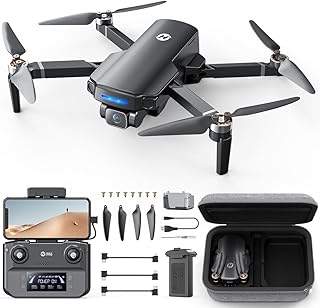Drones and Privacy: Balancing Innovation with Surveillance
Drones, with their soaring popularity and ever-expanding capabilities, have ushered in a new era of technological advancement. From package delivery to aerial photography and even search and rescue, drones offer a plethora of benefits. However, their potential for surveillance raises significant concerns about privacy and individual freedoms. This essay explores the complex interplay between drones and privacy, outlining the challenges and proposing potential solutions for achieving a balance between innovation and surveillance.
The Surveillance Potential of Drones:
Drones, equipped with high-resolution cameras and sensors, can capture detailed images and videos from the air. This capability, while beneficial for various applications, raises concerns about unauthorized monitoring of individuals and their activities. The ease of access to drone technology and its affordability make it readily available for both legitimate and illicit purposes, potentially facilitating widespread surveillance.
Privacy Concerns:
* Invasion of Privacy: Drones can be used to observe individuals in their homes, backyards, and public spaces without their knowledge or consent, violating their right to privacy.
* Data Collection and Storage: Drones equipped with facial recognition software can collect and store personal data, raising concerns about data security and misuse.
* Lack of Regulation: The rapid advancement of drone technology has outpaced the development of clear regulations, creating a regulatory vacuum that allows for potential abuse.
Balancing Innovation with Surveillance:
Navigating the ethical and legal complexities of drones necessitates finding a balance between promoting innovation and safeguarding privacy. Potential solutions include:
* Stricter Regulations: Implementing clear and comprehensive regulations governing drone use, including restrictions on airspace, data collection, and privacy protection.
* Geo-fencing Technology: Using geo-fencing to limit drone flight paths and prevent unauthorized access to sensitive areas.
* Data Encryption and Anonymization: Ensuring data collected by drones is encrypted and anonymized to protect personal information.
* Transparency and Accountability: Establishing clear transparency mechanisms regarding drone operation and data collection, with robust accountability measures for potential misuse.
* Public Education: Raising awareness about the potential privacy implications of drone technology and promoting responsible drone use.
Conclusion:
Drones hold tremendous potential for positive impact across various sectors. However, their inherent surveillance capabilities pose significant challenges to privacy and individual freedoms. Finding a balance between innovation and surveillance requires a multifaceted approach, encompassing strict regulations, technological safeguards, transparency, and public education. By fostering responsible drone use and prioritizing privacy, we can harness the benefits of this transformative technology while protecting the fundamental right to privacy.


